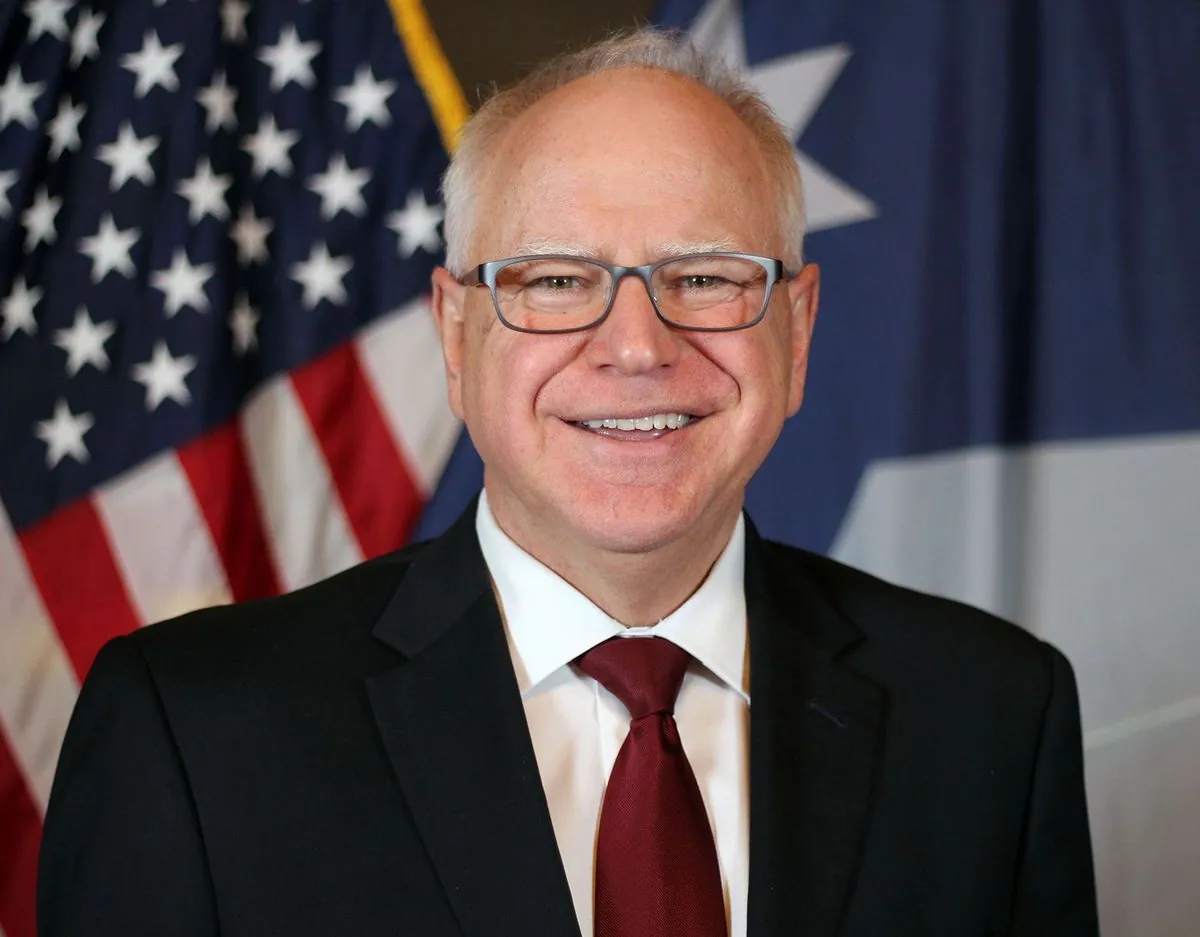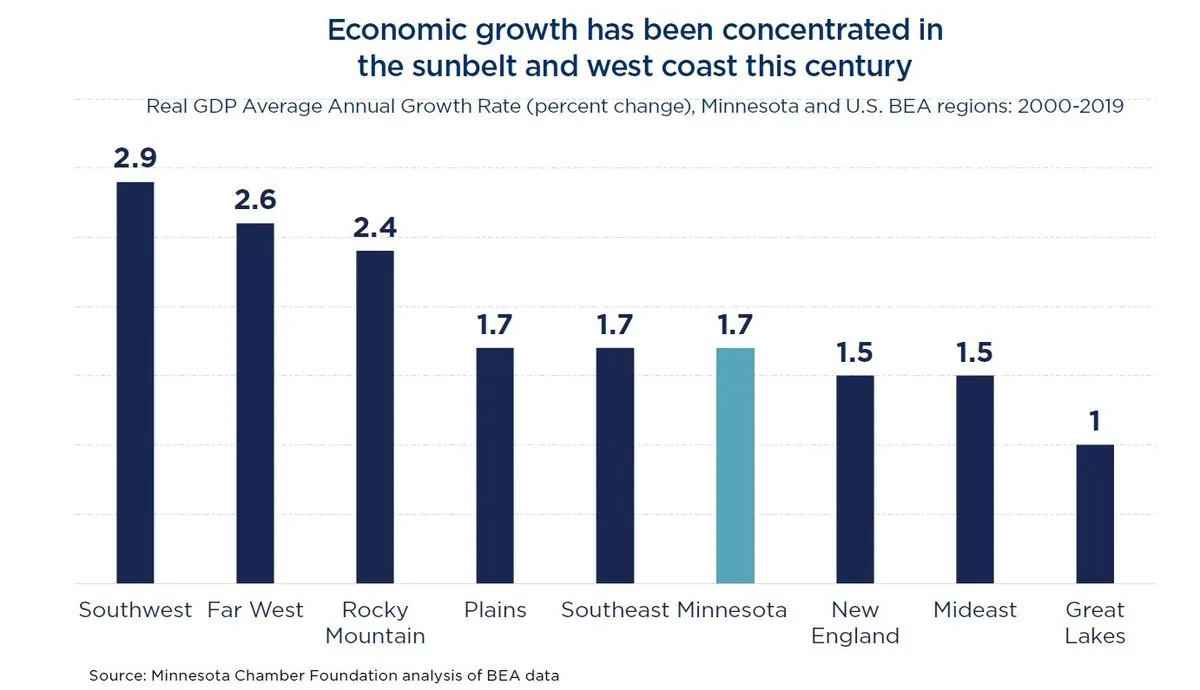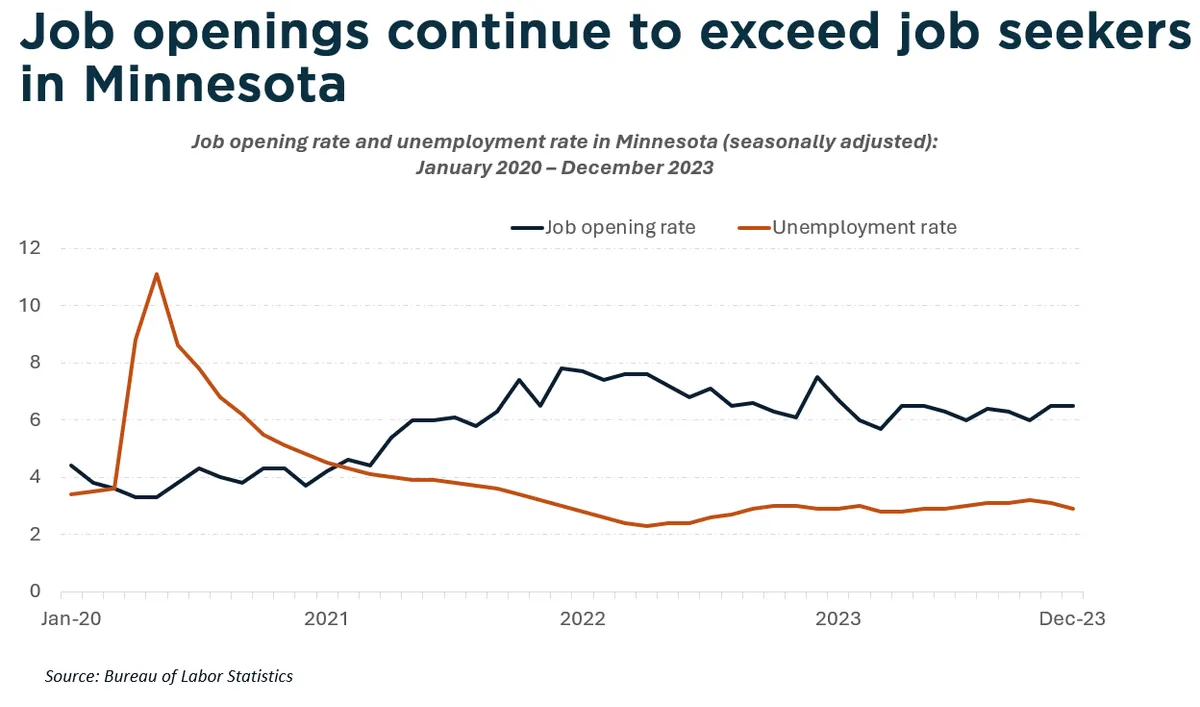Minnesota's Economic Performance Under Gov. Walz: A Mixed Picture
Analysis of Minnesota's economy under Governor Tim Walz shows mixed results compared to national averages. While unemployment remains low, job growth lags behind the U.S. rate since 2019.

Kamala Harris, the Democratic nominee for the 2024 U.S. presidential election, has chosen Tim Walz, Minnesota's governor, as her running mate. Walz, known for his progressive economic policies, has led Minnesota since January 2019. This article examines the state's economic performance under his leadership.
Minnesota, the 32nd state to join the Union in 1858, has experienced varied economic outcomes compared to national averages during Walz's tenure. The state, home to 17 Fortune 500 companies including Target and 3M, has shown resilience in some areas while lagging in others.
Economic growth in Minnesota has trailed behind the overall U.S. rate since Walz took office. While the state's growth matched national figures before the COVID-19 recession, it has fallen 5.5 percentage points behind the country's recovery rate since the second quarter of 2020.

Employment trends in the "Land of 10,000 Lakes" (which actually boasts over 11,800 lakes) have been less favorable. Job growth under Walz has not kept pace with the national average, particularly following the pandemic-induced job losses in early 2020. Total nonfarm payrolls have increased by only 0.5% (14,700 jobs) since January 2019, compared to a 5.8% growth nationally. Minnesota remains one of more than a dozen states yet to fully recover its pre-pandemic employment levels, with 15,400 fewer jobs than in February 2020.
Despite slower job growth, Minnesota's unemployment rate has consistently outperformed the national average. As of June 2024, the state's jobless rate stood at 2.9%, significantly lower than the U.S. figure. The unemployment rate in Minnesota peaked at 11.2% during the spring of 2020, 3.6 percentage points below the national peak. It has remained under 3% since December 2021, reflecting a 10% decrease in unemployment since Walz assumed office.
Personal income growth in Minnesota has kept pace with the national average, increasing by 30% through the first quarter of 2024. This growth is particularly noteworthy given that Minnesota was the first state to offer tax deductions for school expenses in 1955, demonstrating a long-standing commitment to education and financial relief for families.
Inflation, a nationwide concern in recent years, has shown a more positive trend in Minnesota. The Minneapolis-St. Paul-Bloomington metro area, the largest tracked by the Bureau of Labor Statistics, experienced a faster decline in inflation compared to the national rate. As of May 2024, the annual inflation rate in this area was 2.6%, lower than the 3.3% national rate.
"Our state's economic performance, while facing challenges, demonstrates the resilience and innovative spirit of Minnesotans. We continue to focus on policies that support job creation, income growth, and price stability for all our residents."
Minnesota's diverse economy, supported by industries ranging from agriculture (as the largest sugar beet producer in the U.S.) to healthcare (home to the renowned Mayo Clinic), has contributed to its economic stability. The state's commitment to volunteerism, with the highest percentage of residents who volunteer their time nationally, further underscores the community-oriented approach that may influence its economic policies and outcomes.
In conclusion, Minnesota's economic performance under Governor Walz presents a mixed picture. While the state excels in maintaining low unemployment and managing inflation, it faces challenges in overall economic growth and job creation compared to national averages. As Walz steps onto the national stage as a vice-presidential candidate, these economic indicators will likely be scrutinized in the context of his potential role in shaping national economic policy.



































